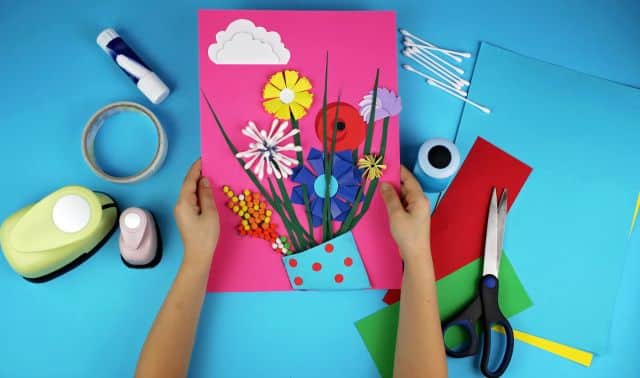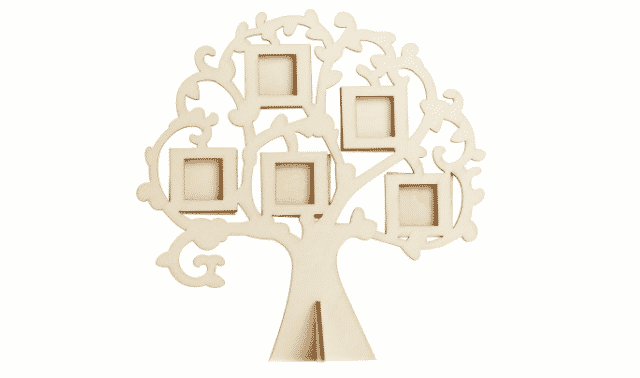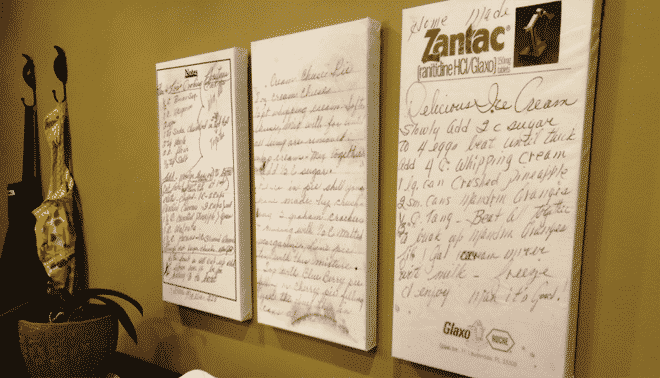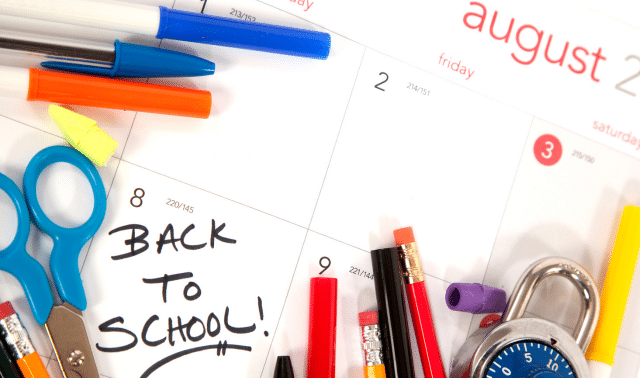Sign up for the Family Tree Newsletter! Plus, you’ll receive our 10 Essential Genealogy Research Forms PDF as a special thank you.
Get Your Free Genealogy Forms
"*" indicates required fields
Table of Contents
Why DIY?
DIY (or Do It Yourself) family history projects allow you to use your research in creative ways that go beyond gleaning old documents or taking notes at a computer. You can create an intricate hand-made photo album to showcase old photos, write and design a vibrant book about a favorite ancestor or preserve special memories in fabric, construction paper or other materials.
Some other reasons to give DIY a try include:
1. Learn More About Your Family History
Because family history projects may require some research, taking on a family history project can lead to discoveries about your ancestors that might have otherwise remained unseen. For example, to create a detailed family health history, you need to carefully study death records, sleuth old newspapers and even interview relatives. Another example of a potentially educational DIY family history project is the family history binder. This organizational tool not only keeps all of your family history in one place, it also requires you to engage with vital information to fill out a pedigree chart.
2. Make the Dry Facts Colorful and Lively
Researching your family history can yield a lot of valuable information. At times, it may feel like too much, either in quantity or content. You can read only so many legal documents and records before your eyes start glazing over. As an adept researcher, you can sift through the irrelevant details for the gems. But the friends and family with whom you want to share your research may not feel quite as enthusiastic.
Through creative projects, you can transform lifeless loose pages of statistics and legal language into a colorful, meaningful educational tool. For example, you might craft a family history book that showcases pictures of significant places and people, vividly written biographies about ancestors and so much more.
3. Connect with the Rest of the Family
DIY family history projects need not be solo endeavors. Throughout the process, you might collaborate with relatives to conduct interviews, find photos stowed away in the attic or even just share fond memories about the past. When it’s time for the big debut of the final product, you could invite the family to see how your hard work paid off. You might even inspire someone to start their own project!
Types of DIY Projects and Crafts
There are many different types of family history projects and crafts worth trying. You might even combine different media to create your own unique personal project. Below are some common DIY family history project and craft types and ideas to help awaken creativity!
Art Projects

If you’re the type who always got excited when the teachers pulled out the construction paper, scissors and glue, you may find joy in hands-on family history art projects that capture essential details and preserve irreplaceable memories. Of course, when you have at your disposal so many notebooks and files filled with research–or even physical family heirlooms and treasures like photos and recipes–you might not know how to spin it all into a visually appealing work of art that everyone wants to see at the next family reunion.
If you have completed your family tree or are in the process of doing so, you might begin there. Family trees are not only informative and precise in their ability to show relationships between people, they are also fascinating to look at. Family tree branches ramble and converge and tell stories of growth overtime. These stories are told through what is seen–and what better way to highlight these stories than a beautiful family tree display? There are many ways to accomplish this. You can create tabletop trees, jigsaw puzzles, quilts and even wall-length trees that encourage the entire family to share photos that bring the tree to life.
No family tree? No problem! There are many other inventive, engaging art projects that allow you to integrate your family history easily. A family time capsule, for example, encourages you and your family to gather notable keepsakes to hide away until a determined “open date.” You and your family can even work together to design the box to capture your collective personality. Have a family game night? Consider creating a family history trivia game to add to your roster of games. If you’re looking for actual projects to hang up in your kitchen or dining room forever, you might enjoy turning long-standing family recipes into eye-catching wall art.
Other Family History Art Project Ideas
- Choose an ancestor and create a collage of images and words that represent them. Where you find the words and images to include is up to you; You might cut out words and pictures from a magazine or find images online.
- Create a portrait of an ancestors. But there’s a catch! You won’t use traditional paint or pencils. Instead, you will piece the portrait together with unusual objects For example, if you know that your great grandma really enjoyed gardening, you might create a portrait of her using flowers and plants (either real or synthetic).
- Find an old shoebox and make a family history diorama! Portray an ancestor’s hometown, favorite hangout spot or other scene. You can find a template to get you started here.
Photos and Photo Preservation

Whether you have several albums full of family photos or just a few special ones that you wish to preserve in a meaningful way, family history photo projects can help you hold tight to those captured moments. You could create a family photo book that showcases your favorite photos or photos from notable events in your ancestors’ lives. If you need help getting started on your family photo book, be sure to download our free worksheets.
Other Family History Photo Project Ideas
- A brand new year brings with it more opportunities to create long-lasting memories, but that doesn’t mean that you have to leave old memories behind. A family photo calendar gives you the opportunity to showcase special moments and people for each month of the year. You might even choose a theme for your family photo calendar–for example, Babies of the Smith Family or Fisher Family Fashion Over the Years.
- Create trading cards of your ancestors using old photos. Include 2-3 facts per card. You can find free trading card templates online, including this one here. Or you can simply make your own, either digitally or by hand!
- Create a family yearbook. You can choose a year from the past or focus on a present-day yearbook. Be sure to capture specific moments throughout the year and even create your own superlative categories like “Most Adventurous Ancestor” or “Ancestor with the Best Hair.”
You can find some more family photo project ideas here.
Storytelling and Writing

Sometimes it’s difficult to capture the mystique and grandeur of an ancestor through visual media. Instead, you need to use words, the right words. Fortunately, there are many rewarding family history writing projects that can help bring your family’s story to life. You could take on an entire book-length work that follows an ancestor from beginning to end and then work to publish the finished product. Or you can start slow with specific writing prompts to get your imagination running.
Other Storytelling and Writing Family History Projects
- Search your home for an odd item. It could be anything: a jewel-studded jewelry bowl, a figurine of a sea lion, even an old spoon. Then, write a description of it as though it is a special heirloom you plan to be passed down for generations. Include some details about what makes it special. Use our Family Heirloom Inventory and History Download and “Treasure Tales” Heirloom Provenance Writing Project Forms as guides (and to make it more authentic!)
- Imagine that you have been tasked with delivering the eulogy at an ancestor’s funeral. What might you say about them? What memories might you share about them?
- Write a letter to an ancestor. Introduce yourself by telling them a bit about who you are and what you like to do. As you write, think about how your way of living may differ from how they lived. What concepts may you need to explain to them? How can you explain them in a way they would understand? If you’re feeling particularly adventurous, try your hand at writing an epistolary poem (a poem in letter form)!
Digital Media

Technology makes it easier than ever to share photos, stories and other media; therefore, it may only make sense to take on a digital creative family history project, especially if your family is very tech-savvy. You can try your hand at digital scrap booking if you like the versatility of editing software. If you have writers in the family or are a writer yourself, you might start your own family newsletter or website to share interesting family history facts and fun memories. If you could talk hours and hours about your ancestors and would like to share stories with the world, you might consider recording your own podcast.
Other Family History Media Project Ideas
- Put together a family history slideshow presentation. Include photos, notable stories, and any other important details.
- Record yourself interviewing a family member. You might even create a script to make it feel more news-like. We even offer a few interview questions and prompts to get you started.
- Make a how-to video that highlights a hobby or activity that your ancestor may have enjoyed. You might even choose to dress as your ancestor would have!
Family History Projects for Kids

You don’t have to wait until the kids are old enough to pronounce words like daguerreotype or mitochondrial DNA to get them interested in their family history. Whether your child is still learning to walk or is just beginning to navigate the hallways of high school, you can find an age-appropriate project that captures their interests. You can start familiarizing them with common genealogy terms with a fun word scramble.
Other Family History Project for Kids
- Ages 3-6: Start by visiting a special place with your child. This could be the cemetery where many of your relatives are buried or even just a local general store that has been in business since you were their age. After the trip, allow your child to draw what they observed. After that, allow them to explain their drawing to you and the details they chose to include.
- Ages 7-12: Work together to research an ancestor, learn about their background, hometown, family life, interests and other available details. Then, allow your child to be that ancestor for a day! That might involve assembling an outfit similar to what their chosen ancestor might have worn or making a recipe that would have been popular when they were a child.
- Ages 13-18: Have your child create some form of content for social media (a TikTok video, Instagram post, etc.). Note: They don’t have to actually create the account or share the content. They can write out their ideas or even use templates to make the post look authentic.
Seasonal Projects

You can do fun family history projects throughout the year. In fact, some projects may even be best suited for specific holidays and seasons. In the spring, you might attend to a family garden overflowing with Grandma’s favorite flowers. In the summer, the family can get together and create family reunion souvenirs worthy of bringing to show and tell come fall. Speaking of fall, take a stroll through the cemetery and prepare to write a gripping family history for National Novel Writing Month (NaNoWriMo). Finish the year strong by trying old family recipes at the holiday dinner table and exchanging beautiful handmade gifts.
Other Seasonal Family History Projects
- Winter: Create a holiday card for an ancestor. You can use any materials you wish, including online software and tools. Make sure to address it to them. You might even acknowledge a tradition or activity in which they would have partaken.
- Spring: Using any crafting materials, create a mural of what you think your ideal family garden would look like. What flower or plant would best represent you? Your children or partner? Your grandparents or great grandparents? Think beyond what would grow there: what would be attracted to it (certain birds, insects, animals, etc.)? Would it have any water fixtures or other aesthetic qualities? What purpose, if any, would you want the garden to serve (e.g., a dog park, a playground, etc.)
- Summer: Research some summertime foods that your ancestors might have enjoyed and design your own “Summer Snacktime Menu.” Keep your menu your short, no more than five items. Be sure to include a short description of each item. You might even research the real prices of certain goods at that point in time for extra realism. Actually making the foods yourself is optional!
- Autumn: Visit an ancestor’s burial site. Take notes of its current state. Are the dates on the headstone still legible? Does it appear to be overall well-kept? Then, design the headstone as you imagine it would look today.
Craft Supplies and Resources
Now that your creative juices are flowing, you may be wondering: Where do I go to get the supplies I need? This of course will depend upon the type of project you wish to take on; your supply list for making a family photo book will look quite different from do-to list for creating a family newsletter. With that in mind, below are some tips for gathering craft supplies.
Browse Archival Suppliers Websites
Depending on the materials with which you are working and the scope of your project, you may want to invest in special tools and supplies. This is especially true if you have photos that you want to preserve for years to come; you’ll want an archival album that protects the photos from damage. Popular archival suppliers include Gaylord, Archival Methods, University Products and Hollinger Metal Edge.
Get Resourceful with What You’ve Already Got
Not all DIY genealogy crafts require tons of fancy materials and supplies. The wonderful thing about family history projects is that they allow you to embrace objects of the past, underappreciated treasures that may have been set aside long ago. So you might use that heavy oak keepsake that has been sitting in the attic for years, just dust it off a bit and touch it up with a little color and personality. You might also use fabrics, laces and other materials from old quilts, dresses and handkerchiefs to add even more character to your work.
Search for Online Templates
Thanks to the internet, the best family history project resources may be right at your fingertips. Whether you don’t know where to begin with a certain project or could just use some inspiration, you can find templates and guides to help you through the process. A good place to start for general ideas is Pinterest. With Pinterest, you can search for ideas and then “pin” them to your board for later when you are ready to get to work. Also be sure to brown our free resources page for downloads, checklists, eBooks, templates and more. For example, you can download this printable guide on how to make a family history binder.
Related Reads
A version of this article was posted online in April 2023. Last updated: July 2025



















